As we celebrate our 41st anniversary issue, it is imperative to shine a light on the role of women in shaping the world around us. In this session of Design Dialogues, we bring together two accomplished architects, Mitu Mathur – Director of GPM Architects and Planners and Aparna Kaushik – Principal Architect and Founder of Aparna Kaushik Design Group, to engage in a thought-provoking conversation about the challenges, triumphs, and unique perspectives that women bring to the world of design. Read on, as Aparna and Mitu share their experiences in empowering and mentoring aspiring women designers and architects, paving the way for future trailblazers.
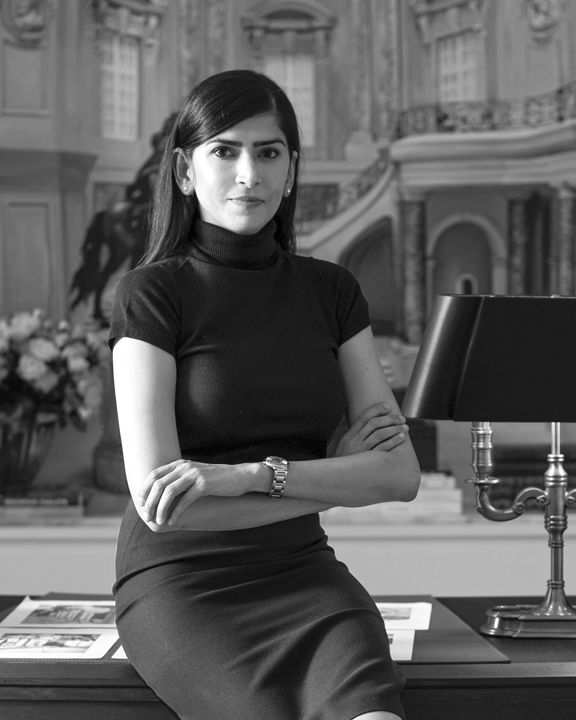

FORGING PATHS, BREAKING BARRIERS
When Aparna asked Mitu about her decision to venture into urban design and architecture, she credited her father Gian P. Mathur, Founder & Managing Director of GPM Architects and Planners, as the driving force behind her choice. “I give all the credit to my father to actually inspire me to be in this industry,” she said. However, she acknowledged that the industry was predominantly male-centric, which made it intimidating for her initially. “To be very honest, he’s been surrounded with men mostly. So, it was a little scary in the beginning,” Mitu admitted. Despite the challenges, Mitu found motivation in the very environment that at first seemed daunting. She explained, “But I think that is something that gave me that kick and the excitement. When I’m in a room full of men, especially taking all the decisions, it’s when I kind of got the courage to raise my voice and put my opinion forward.”
Mitu also drew inspiration from prominent female designers in the field, such as Elizabeth Diller of Diller Scofidio + Renfro, renowned for her work on projects like the High Line Park in New York. “During my learning years, especially during college, a lot of international women designers inspired me. I looked up to Elizabeth Diller because she’s one of the few pioneering designers who got into the urban realm,” Mitu said. “Along with that, yes, we’ve been seeing the likes of Zaha Hadid and Denise Scott Brown. Looking up to them and seeing a different world from the perspective of design was something that kept me going for sure,” she added.
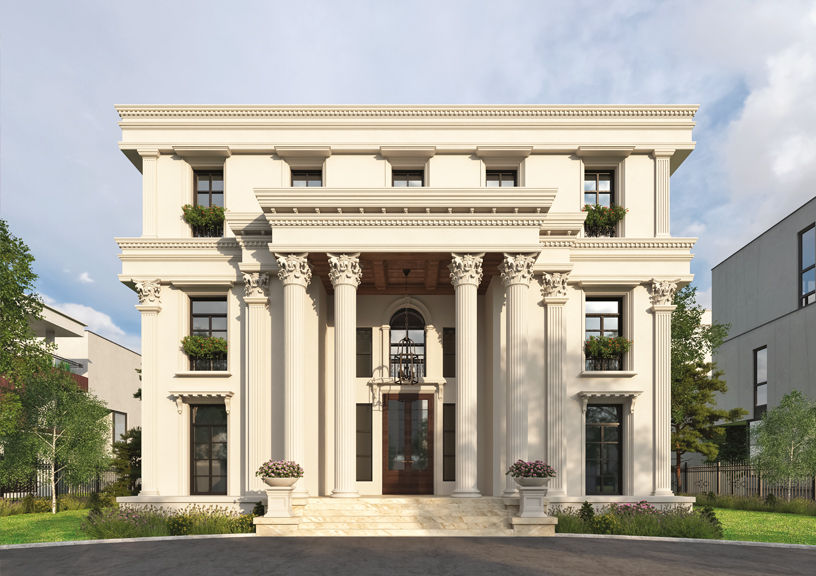
Aparna Kaushik’s journey into the world of design and architecture was an organic one, driven by her passion for beauty and creativity rather than a predetermined goal. In her own words, “It wasn’t really a goal or anything but more like an organic journey.” Coming from a family with a business background, Aparna’s interest in design was an unconventional choice. She recalls, “I was never a mathematical or a scientific mind, so to speak. I was more into pictures and beautiful objects, and I would get attracted to everything that looks pretty around you, be it a landscape or a movie or the sets or anything.”
In the early stages of her career, Aparna faced challenges as a young professional, compounded by her gender. She admitted, “So when I began my journey, I quickly realized that A, you’re a girl, you look a bit quaint when you go on the sites, so you need to look a bit older.” Her father even suggested hiring an older colleague to accompany her to meetings to be taken seriously. Reiterating the sentiment, Mitu shared,” In addition to your point about how women adapt to these situations, I also decided not to colour my hair and just embrace the greys. I’ve learned to appreciate my authenticity and confidently present myself without concerns about gender stereotypes. This mindset has empowered me to step up, share my ideas, and be open to whatever unfolds.”
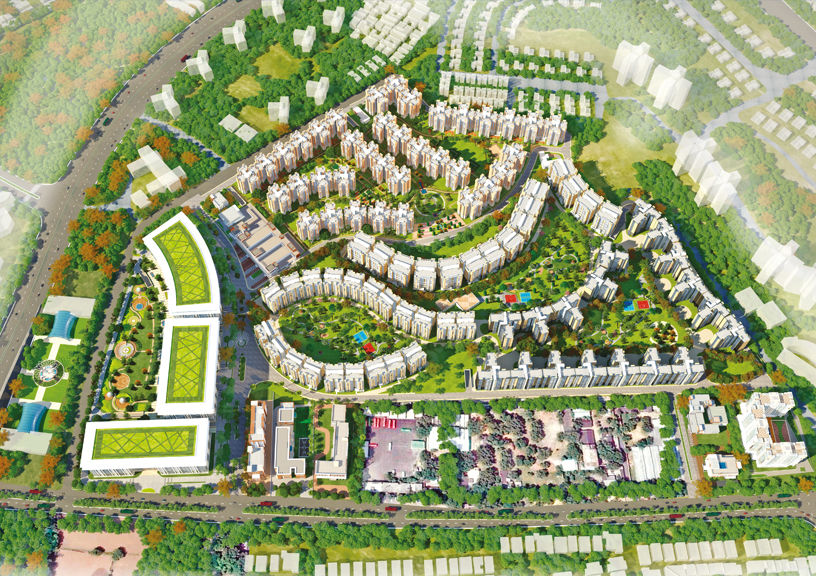
CRAFTING DREAMS, SHAPING LEGACIES
AK: I have always been fascinated by the fearlessness exhibited by international firms in their work. They are not afraid to experiment and create unique designs, establishing a distinctive environment rather than borrowing from existing sources. The main challenge I face in my own work is to establish a design-oriented firm where the concept stage is as interesting as the execution process. When traveling abroad as an architect, I observe the intricate details in various stores. In India, you often find a single style that everyone follows. However, in places like Milan, you can stroll down a street and find a modern cafeteria, a vintage one, and even a futuristic version in the same street. The diversity and creativity in these designs make me wonder how such different concepts can coexist in such proximity. It has taught me that while creative ideas can be put on paper, it is equally important to have a team that can bring those designs to life. This realisation has been my greatest inspiration, looking to the West. However, I do believe that our country possesses immense talent. When I visit places like Banaras and witness the skill of carpenters and silk weavers, I am reminded of the vast talent pool that exists. It is up to someone to connect these talents together, and that has been a major source of inspiration for me in recent years.
MM: Another topic that I find quite interesting is the role of teams and how we, as women in powerful positions within the industry, can empower other women. I often find myself in situations like walking into a boardroom, giving a presentation, or even just working in my office, where I sense that there are people who look up to me. This not only makes me feel responsible as a professional but also as someone who wants to pave the way for other women designers or aspiring designers in our field. Having said that, Aparna, I would love to hear your perspective on this matter. As women in design leadership roles, what do you think is our responsibility in empowering other women in the industry and helping them navigate their way forward? Do you have any interesting stories or ideas to share?
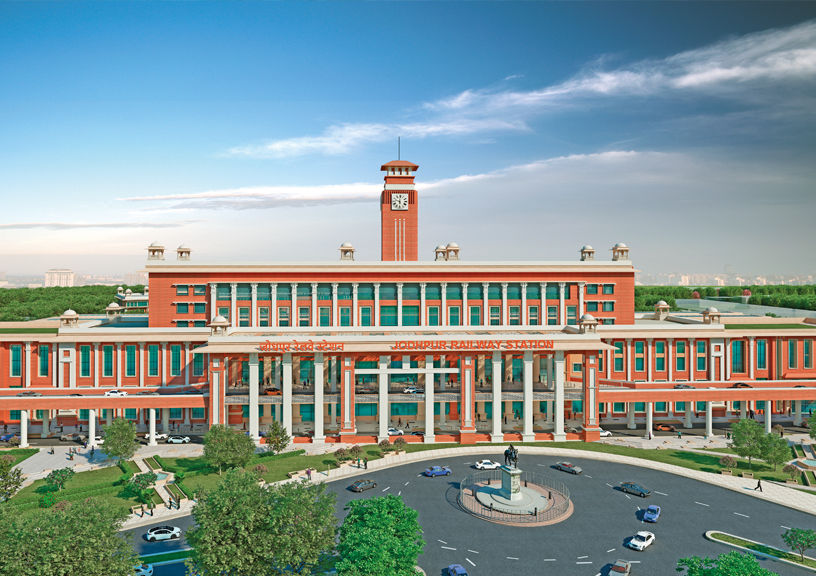
ARCHITECTS OF EMPOWERMENT
AK: I have noticed an interesting trend, Mitu. In my experience, when we conduct interviews and seek talent, we have observed that most of the applicants in the design industry are women, approximately 70% to be precise. This influx of women deciding to pursue careers in design is quite encouraging, and it’s a positive shift in our industry. Furthermore, I have observed that women have a natural inclination towards multitasking, which manifests in their exceptional coordination and leadership skills. For example, in my firm, I have seen female project managers effectively juggle their responsibilities, including coordinating with clients, collaborating with contractors, and supervising design teams. This innate ability to multitask makes them excellent managers and leaders. While we aim to hire based on talent rather than gender, this observation has led to our organisation humorously being labeled as ‘woman-empowered,’ with jokes about needing more men to balance out the ratio. In terms of empowerment, I believe that women are already empowered, especially considering their education, multitasking abilities, and the results they achieve in their roles. While there may have been initial difficulties in being taken seriously, these have been overcome with practice, experience, and tangible results. I believe the next decade will further demonstrate the progress and potential for women in our industry.
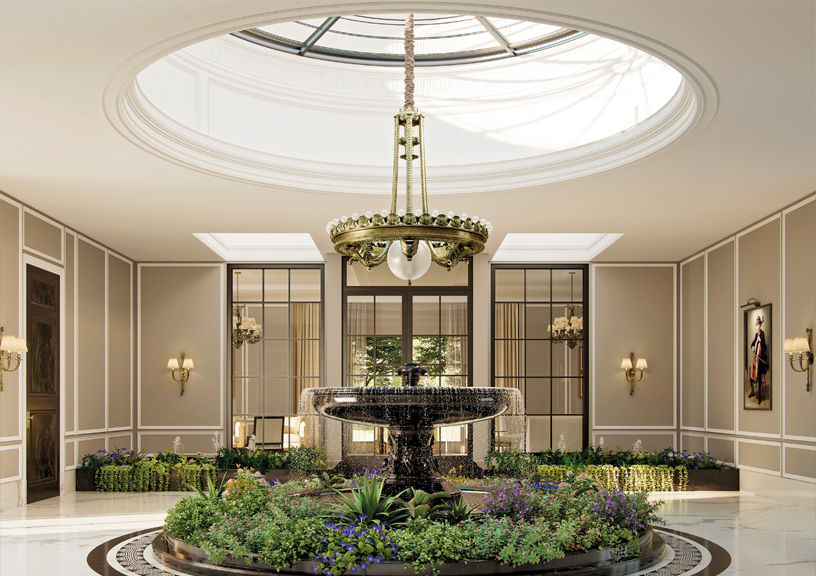
MM: I completely agree with you, Aparna. Women have unique strengths that bring significant value to the workplace, including their natural compassion and empathy. It’s admirable to see so many women balancing multiple responsibilities and still excelling in their roles. At my organization, we prioritize empowering women by offering flexibility in working hours, leaves for maternity or higher education, and work from home options. It’s heartening to see that women have taken advantage of these opportunities and have been able to progress in their careers despite taking a break. I am particularly proud to share that we have several women in leadership positions in our firm. Our head of structure engineering and business development are both women, and I firmly believe that women are excellent at multitasking, leading teams and taking ownership of their work.
Moreover, I believe that education is a powerful tool for empowerment. I encourage younger women and those who have been in the industry for some time to pursue further education and invest in their personal and professional growth. Our responsibility is to support and encourage our female workforce to study, return to work, and achieve their goals, even if they decide to start a family. It’s essential to embrace and celebrate the diversity and strengths of women and create a supportive and inclusive work culture that enables all employees to thrive. As we move forward, I believe that we need to continue working towards effortless integration of work and life to build a stronger and more empowered female workforce.
TRIALS AND TRIUMPHS: MAIDEN SITE FORAYS
AK: Mitu, I have a fascinating experience to share with you about my initial site visit experiences. It happened during my third year of practicing architecture. I remember visiting a site where we were working on a beautiful villa. At that time, I was quite young and inexperienced, trying to communicate with a contractor who had decades of experience and a somewhat patronising tone. As I was explaining a design concept, he kept dismissing my ideas. Despite my efforts to assert myself, I found it challenging to make my voice heard in the conversation. At my 7th or 8th time inspecting the site, I noticed one of the plastered walls—someone had drawn a very thin and tall caricature of me using chalk. At first, I was extremely upset and bothered, I kept thinking about the best way I could deal with this unpleasant situation. Before leaving, I confronted the contractor and asked him who the drawing was and eventually had it washed off. This moment marked a turning point in how I was perceived on the site. From then on, I noticed a shift in how I was treated – I was taken more seriously, and my opinions were valued. This experience taught me the importance of stepping out of my comfort zone and seizing opportunities to assert myself, even when it feels intimidating. It was a moment of personal growth and empowerment, showing me the value of speaking up and taking control of a situation.
MM: Interestingly, a similar experience resonates with me. When I first started my journey in architecture, I was thrown into a site visit for a large-scale project without much guidance. Feeling a little overwhelmed, I was on the verge of speaking up when someone shared a valuable piece of advice with me: “Before they ask you anything, always ask the experts on site to explain their process first.” This simple tip became a game-changer for me. During every site visit or inspection, I made it a point to approach the workers and ask them to walk me through their methods. By doing so, not only did I gain valuable insights into the construction process, but I also established a connection with the team on site. It was like taking control of the stage and becoming the focal point of the interaction, just as you described. This approach has stuck with me ever since. I believe that in architecture, and in life, we are constantly learning and evolving. There is always something new to discover, and every experience, whether it’s a site visit or an interview, presents an opportunity for growth. Making mistakes, asking the right questions, and embracing the learning process are all part of the journey towards becoming a better professional.
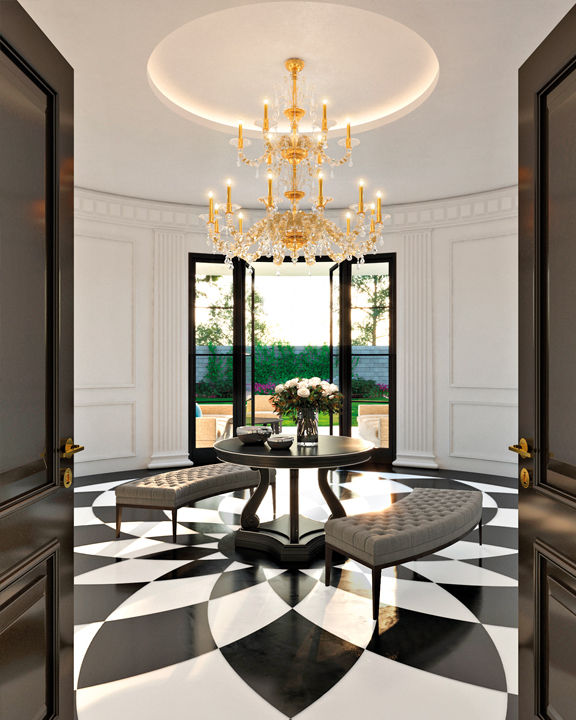
EDIFICES OF ENDURING EXCELLENCE
AK: I find the project I’m currently working on to be incredibly intriguing. It involves designing a home for a multi-generational family, spanning four generations, each with their distinct preferences and visions. It’s quite a challenge, considering the diverse aspirations and exposure levels within the family. Sitting down with each member, trying to grasp their individual needs and desires, has been both enlightening and complex. The goal is to create a space that not only caters to their varied tastes but also stands the test of time as a cherished legacy.
Take the iconic Rambagh Palace, for instance – a family-owned property that has become a timeless emblem. When designing a home, I strive to create a space that transcends generations, one that the family can proudly pass down through the ages. My aim is to craft a residence that is truly timeless, imbued with an everlasting charm and flexibility to adapt to evolving needs, while maintaining an unwavering sense of beauty. The current project we are undertaking shares a similar ethos, and we are pouring our passion into creating a lasting legacy for the family.
It’s not just about creating a beautiful space; it’s about understanding the emotional and psychological aspects of my clients’ needs. And we kind of become the confidantes, especially with the women in the family, as they open up about their desires, turning the project into a captivating family drama series managed by the architect. This dynamic often spills over to my dinner table, where emotional calls from clients interrupt the meal, blurring the lines between architect and therapist. My mother jokingly remarks that if my therapy sessions are over, we can finally start with the food, highlighting the evolving role of an architect as a listener, problem-solver, and, at times, a therapist. It seems like being an architect-therapist might just be the new profession in the making!
MM: When I joined the practice, I was eager to engage in a more public role, captivated by the growth of our cities and the lack of revitalization within them. Having observed New York’s transformation during my studies in the U.S., I often wondered why similar redevelopment wasn’t happening in Indian cities. This curiosity drove me to focus on urban redevelopment, and I was fortunate enough to be involved in two significant projects in Delhi: the Netaji Nagar and Sarojini Nagar redevelopments, covering 150 and 280 acres, respectively. These projects are not only substantial in scale but also hold a special place in the heart of Delhi. We’ve encountered numerous challenges, from environmental concerns to legal and infrastructural issues. I’ve had to work closely with lawyers to justify the need for revitalisation to both the government and the people of Delhi. This process has been enlightening, revealing a certain nostalgia among Indians for the past, yet a reluctance to evolve these sentiments into something we can bequeath to future generations. This aligns with the idea of creating spaces that endure through time, which is something I am deeply passionate about. The redevelopment projects are long-term, expected to span over 7-8 years, making the process and framework we establish crucial. My passion lies in creating a blueprint for the city to grow organically from within, using these projects as exemplars.
Another opportunity arose with the revitalization of railway stations. Often, railway lines divide cities, but I believe stations can serve as unifying urban hubs. Collaborating with the railways, we’re reimagining these stations as vibrant centers of activity, integrating commercial, residential, hospitality, and food plazas. The goal is to transform these nodes into places of pride rather than areas of neglect. As we continue to work in the public urban realm, we’re also expanding into commercial projects and hospitality, which are burgeoning sectors. It’s an exciting time to be in India, a period of significant infrastructure growth. This era of economic prosperity is fostering a renaissance in architecture and interior design, as well as other art forms. Economic growth brings patrons who are willing and able to invest in the development of culture and the arts, and we are witnessing this firsthand in our country.
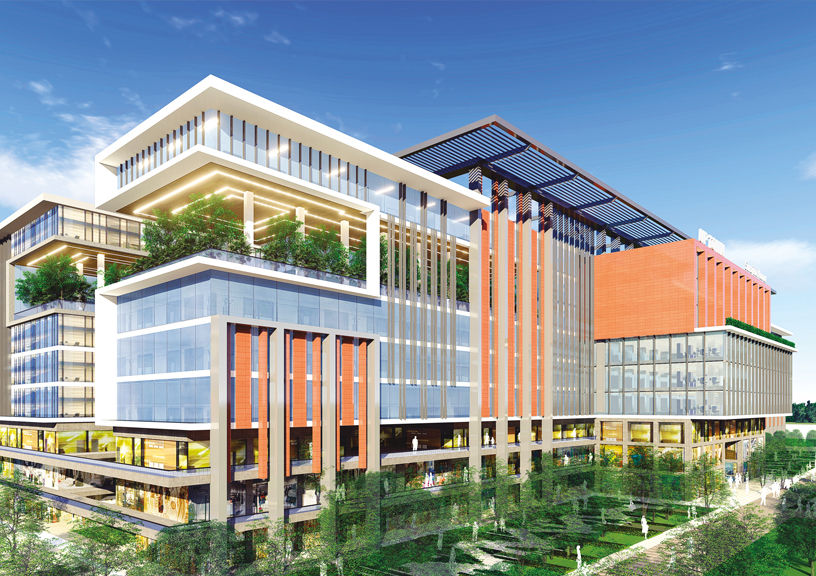
SCULPTING THE HORIZONS AHEAD
MM: It is crucial that we start perceiving our industry not just as a design endeavor but as a growing business that significantly contributes to the country’s economy. The real estate sector is one of the highest economic generators for our nation, and we need to acknowledge and grow as part of these burgeoning businesses. Currently, I am focused on implementing robust systems within our organization and architectural practice. We must learn to approach our work from a business perspective, which includes aspects like billing, payment collections, and contracts – areas that are often overlooked in architectural education.
As architects, we need to systematize our entire practice, from design processes to execution. This is a critical gap in our industry, and it is one of the reasons why architectural firms led by one generation often fail to transition to the next. We must approach our work as entrepreneurs and establish the right systems to ensure continuity and success. While design itself can never be entirely systematic, as it is an organic and idea-driven process, we must have proper execution systems in place. Without such systems, even our most innovative designs may never see the light of day. Therefore, my vision is to transform our industry by emphasizing the importance of systematic processes, business acumen, and entrepreneurial mindset, while still preserving the creative essence of design. This holistic approach will not only ensure the longevity of our practices but also contribute to the growth of the economy as a whole.
AK: As a young and enthusiastic country, I envision my firm expanding its horizons and taking on international projects in the next 5-10 years. While we are already working across 15 cities in India and have completed a few projects in Dubai and London, I have a strong desire to diversify our global footprint and work in different parts of the world. This international exposure will not only broaden our perspectives but also enrich our design sensibilities.
To achieve this goal, I recognize the need to implement robust systems that will enable us to operate seamlessly across borders while being based in New Delhi. Having the right systems in place will allow us to work efficiently in any part of the country or the world, ensuring that our creative vision translates into reality, irrespective of geographical constraints. Furthermore, I envision building a more inclusive practice by bringing in young, talented designers from diverse cultural backgrounds and walks of life. This diversity will not only foster a vibrant exchange of ideas but also equip us with the cultural sensitivity and global mindset required to deliver exceptional designs that resonate with audiences worldwide. By combining a systematic approach, international expansion, and a diverse talent pool, I aspire to establish our firm as a globally recognized force in the architectural realm, pushing the boundaries of design while staying true to our roots and ethos.
